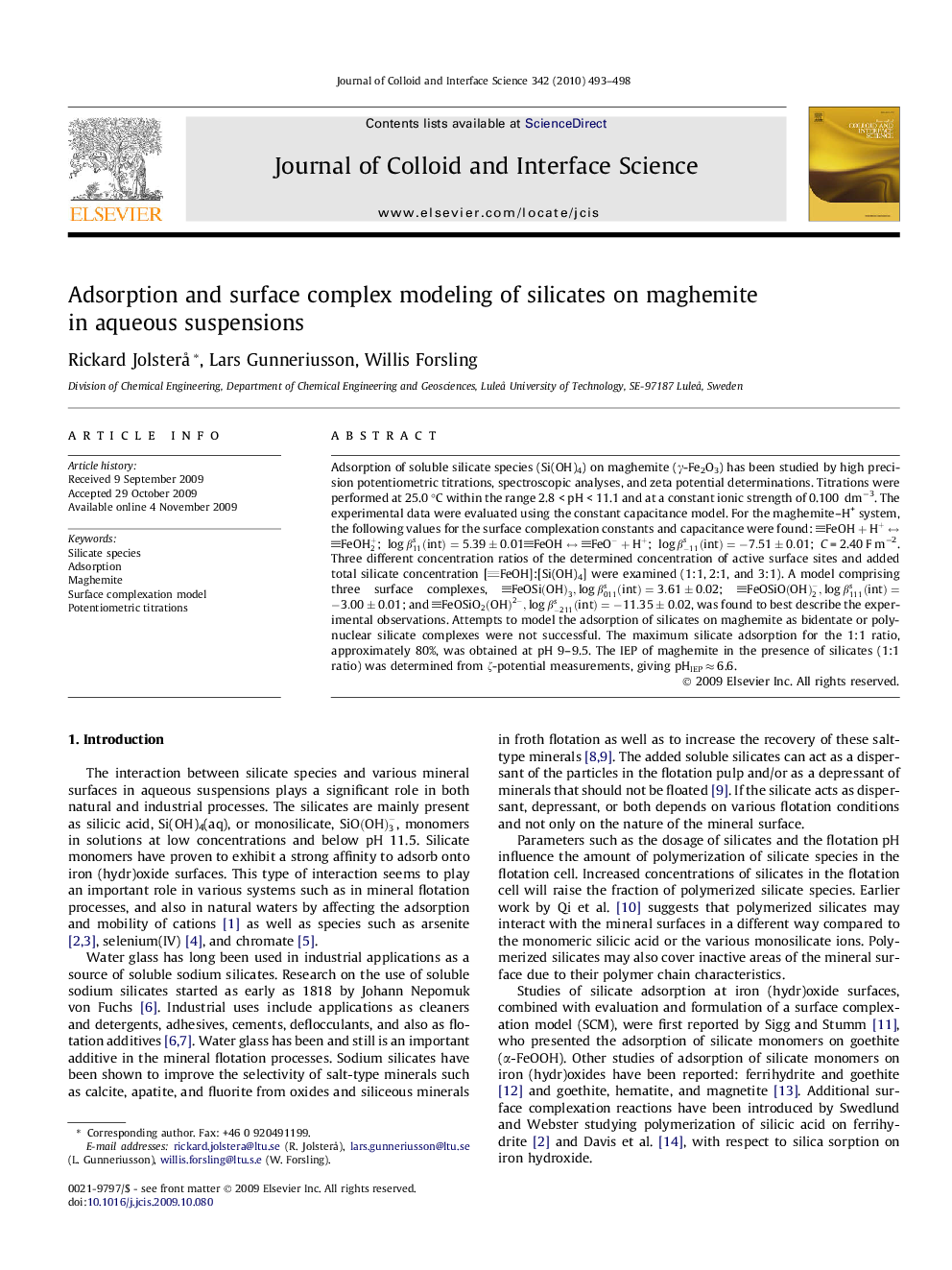| Article ID | Journal | Published Year | Pages | File Type |
|---|---|---|---|---|
| 609548 | Journal of Colloid and Interface Science | 2010 | 6 Pages |
Adsorption of soluble silicate species (Si(OH)4) on maghemite (γ-Fe2O3) has been studied by high precision potentiometric titrations, spectroscopic analyses, and zeta potential determinations. Titrations were performed at 25.0 °C within the range 2.8 < pH < 11.1 and at a constant ionic strength of 0.100 dm−3. The experimental data were evaluated using the constant capacitance model. For the maghemite–H+ system, the following values for the surface complexation constants and capacitance were found: FeOH+H+↔FeOH2+; logβ11s(int)=5.39±0.01FeOH↔FeO-+H+; logβ-11s(int)=-7.51±0.01; C = 2.40 F m−2. Three different concentration ratios of the determined concentration of active surface sites and added total silicate concentration [FeOH]:[Si(OH)4] were examined (1:1, 2:1, and 3:1). A model comprising three surface complexes, FeOSi(OH)3,logβ011s(int)=3.61±0.02; FeOSiO(OH)2-,logβ111s(int)=-3.00±0.01; and FeOSiO2(OH)2-,logβ-211s(int)=-11.35±0.02, was found to best describe the experimental observations. Attempts to model the adsorption of silicates on maghemite as bidentate or polynuclear silicate complexes were not successful. The maximum silicate adsorption for the 1:1 ratio, approximately 80%, was obtained at pH 9–9.5. The IEP of maghemite in the presence of silicates (1:1 ratio) was determined from ζ-potential measurements, giving pHIEP ≈ 6.6.
Graphical abstractThe adsorption of silicate on maghemite (γ-Fe2O3) has been studied and evaluated using the constant capacitance model. The diagram shows a modeled distribution (Fi) of the surface species.Figure optionsDownload full-size imageDownload high-quality image (111 K)Download as PowerPoint slide
